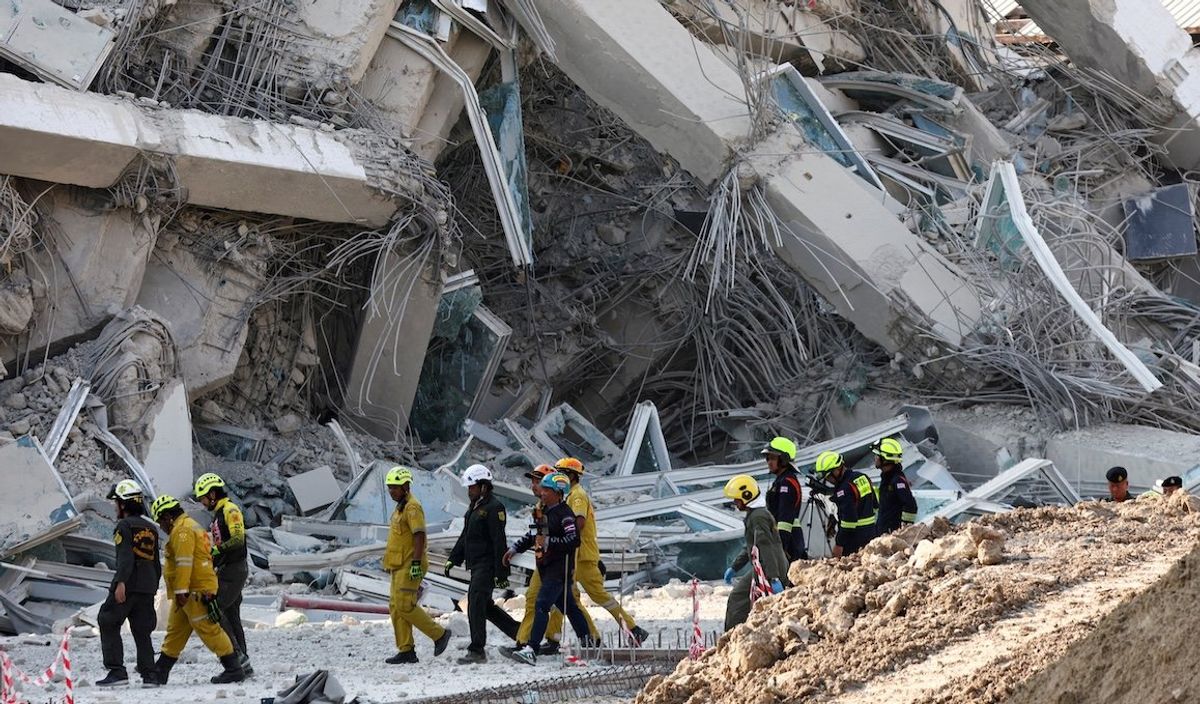Scientists on red alert as 'sleeping giant' fault threatens to snap without warning beneath 300,000 Americans
By Osheen Yadav
Daily Mail
Jul 12, 2025

A new US geological (USGS) survey showed that Concord Fault, a geologic fault in the San Francisco Bay Area, is active and moving due to ongoing tectonic motion between the Pacific and North American plates.
A section of the fault, known as the Madigan Avenue strand, stretches 12.4 miles through Walnut Creek and Concord, from North Gate Road near Mount Diablo to Suisun Bay — areas home to more than 300,000 people.
According to the study, if the Concord Fault ruptures, it could produce an earthquake of magnitude 6.7 or higher, based on its length.
A fault is a fracture in the Earth's crust where land slowly shifts over time. But if that movement suddenly snaps, it can trigger a powerful and destructive earthquake.
Seismologists now believe the fault lies about 1,300 feet west of where it was previously mapped, placing homes and an elementary school directly in harm's way.
Sidewalks near Valle Verde Elementary have shifted nearly seven inches since they were first built, a clear sign that the ground is steadily moving beneath residents' feet.
'This was not where we thought the active part of the fault was,' the study states, a finding that means hundreds of thousands of people may be living or working directly above a ticking seismic time bomb.

A new US geological (USGS) survey showed that Concord Fault, a geologic fault in the San Francisco Bay Area, is not only active but moving in ways experts had not seen before
Experts warn the entire East Bay is at risk, especially because the fault is now proven to be creeping in urban areas with no buffer zone or open space.
Jessie Vermeer, a geologist at USGS, told San Francisco Chronicle: 'Many of the people we have spoken to have noted their houses and yards being deformed, water lines being broken and other effects of the creep.'
Because fault creep happens so slowly, it is easy to miss, but over decades, it causes cracked roads, damaged homes, and bent pipelines.
It was long believed to creep only in the northern section near the Acme Landfill in Martinez.
But this new study, published in the Bulletin of the Seismological Society of America, proves a 4.4 miles stretch in the south is also slipping.
Over the past 60 years, some concrete curbs have quietly shifted sideways, without any shaking or sound, revealing hidden ground movement in the middle of a densely populated area.
Researchers also found that it is shifting at a steady rate of about three millimeters per year. That pace matches what has been recorded along the fault's northern section.
To confirm the movement, USGS scientists reviewed over 30 spots where curbs, sidewalks, and roads showed visible cracks or misalignments.

The map shows the major earthquake faults running through the region, along with nearby city centers. It's based on the latest true-color satellite imagery, and includes only the faults officially listed in the US Geological Survey's Quaternary Fault and Fold Database

Photos reveal cracked curbs and shifted sidewalks on East Bay streets, indicating a fault moving beneath them. White markings indicate pushed curbs and sidewalks, while red markings indicate sideways movement. These shifts match the newly identified fault trace
They used field surveys, satellite data, and historical construction records to trace where the ground had slowly moved over time.
Roland Burgmann, a professor of earth and planetary science at the University of California, Berkeley, told Newsweek:'Knowing the correct fault location in such a highly urbanized area is crucial.'
'The original geological mapping missed the currently active fault strand,' he added.
While creeping faults can sometimes reduce the size of a future quake by releasing pressure slowly, experts say the Concord Fault's true danger is still unclear.
'We don't know how deep the creep extends, so the seismic hazard of the fault becomes more uncertain,'said Burgmann.
In 1955, a magnitude of 5.4 earthquake on the Concord Fault caused approximately $1 million in damage, which is equivalent to about $12 million in today's dollars.
Currently, nearly 300,000 people live in the cities sitting on top of this 'sleeping giant,' and many more pass through daily on roads, rails, and water lines that cross the fault.
Further research is underway to determine if other undocumented fault strands exist nearby, which mean the seismic hazard in the East Bay is even more complex than currently understood.
No comments:
Post a Comment